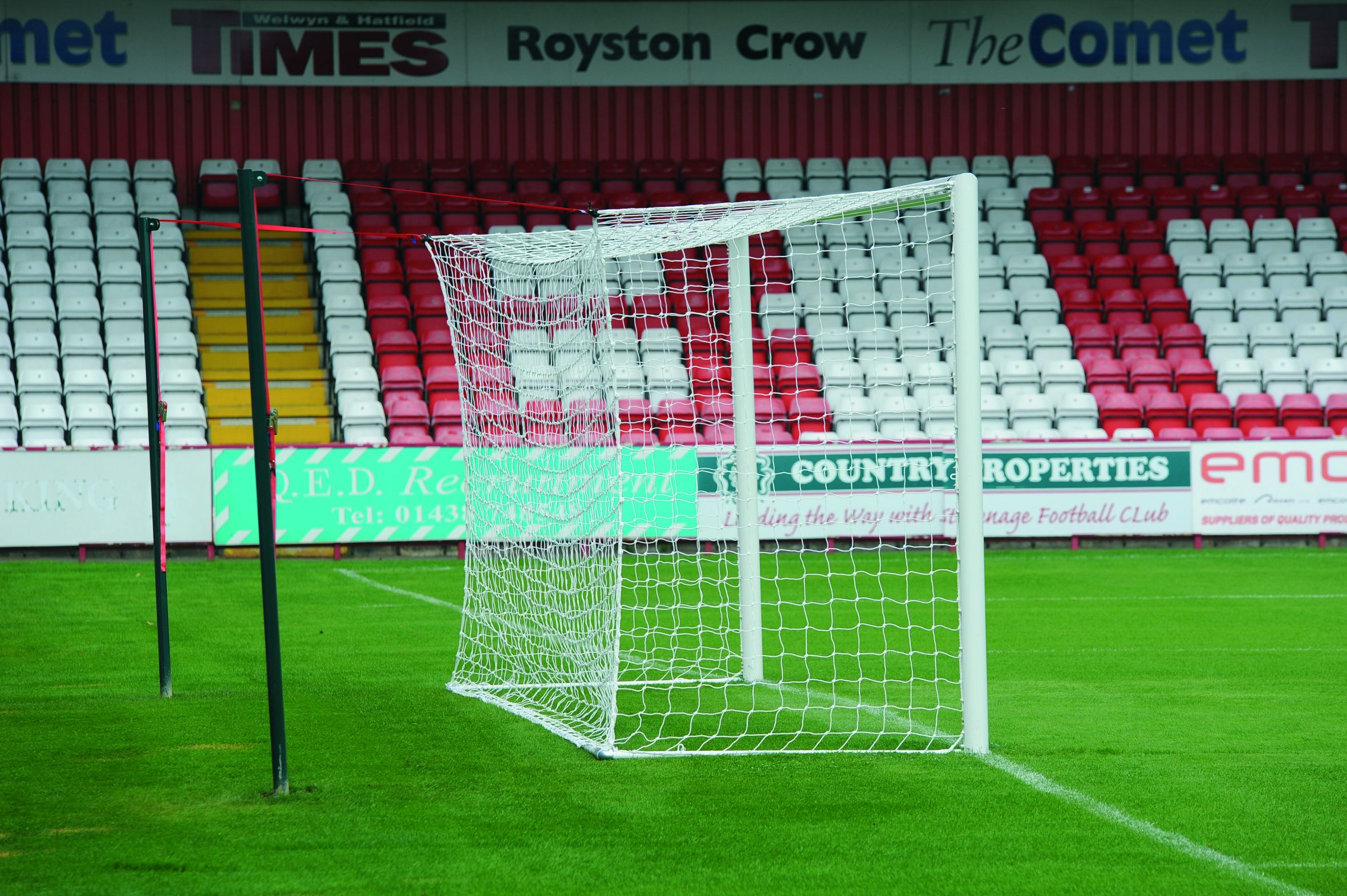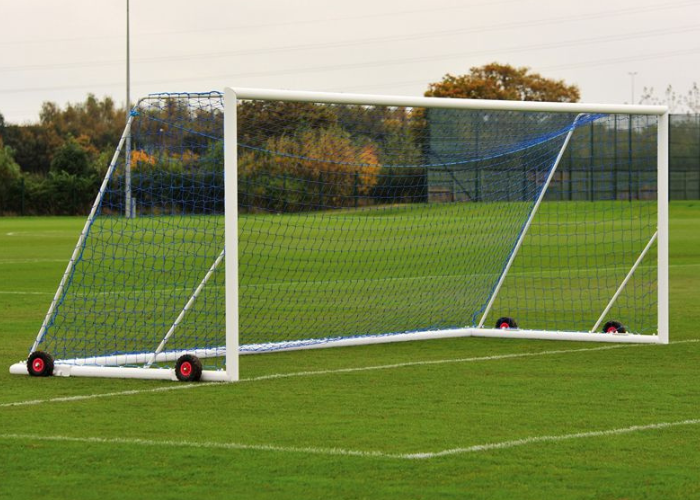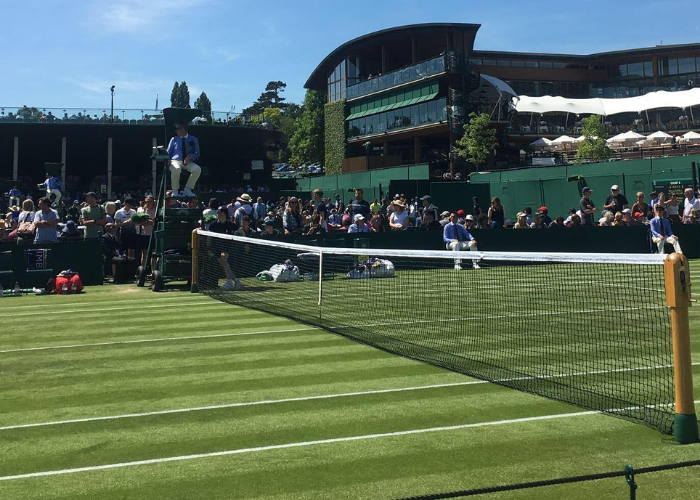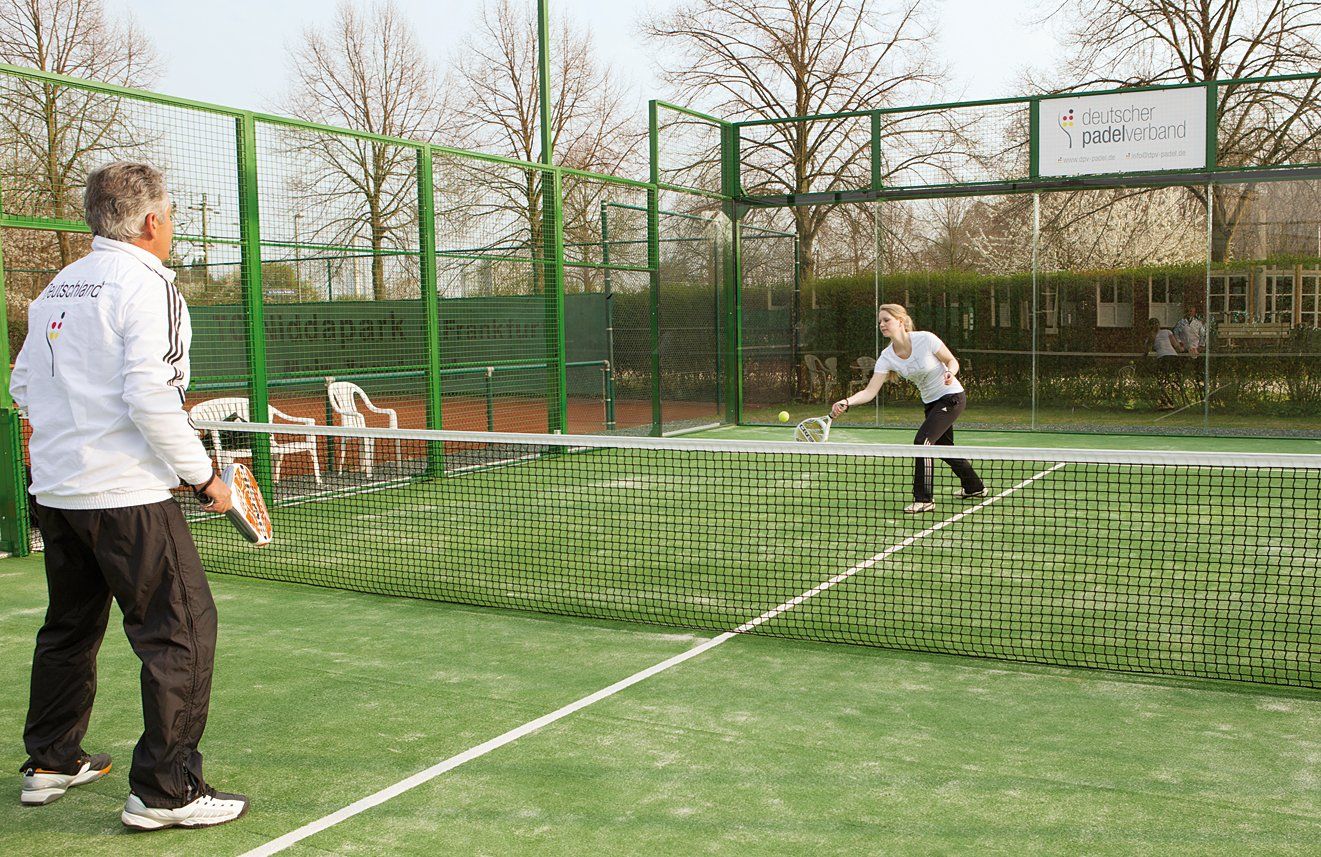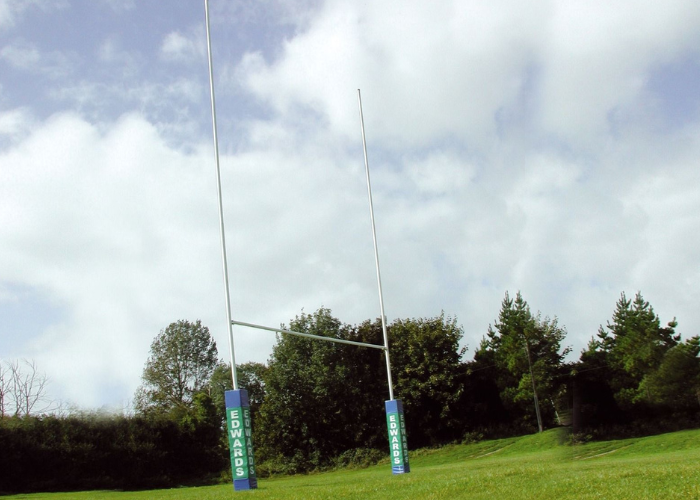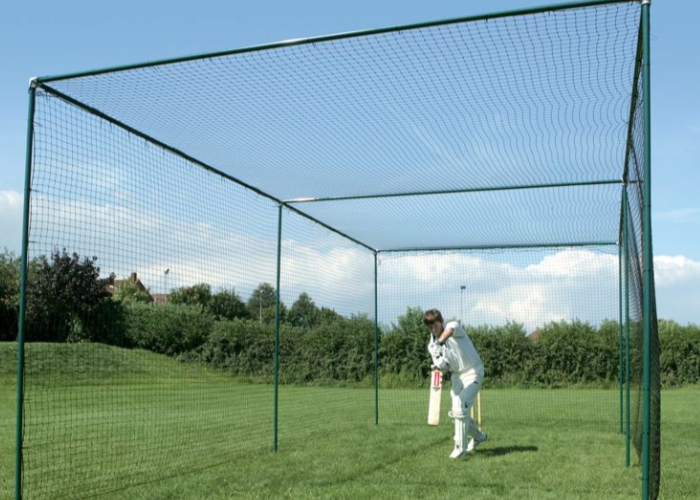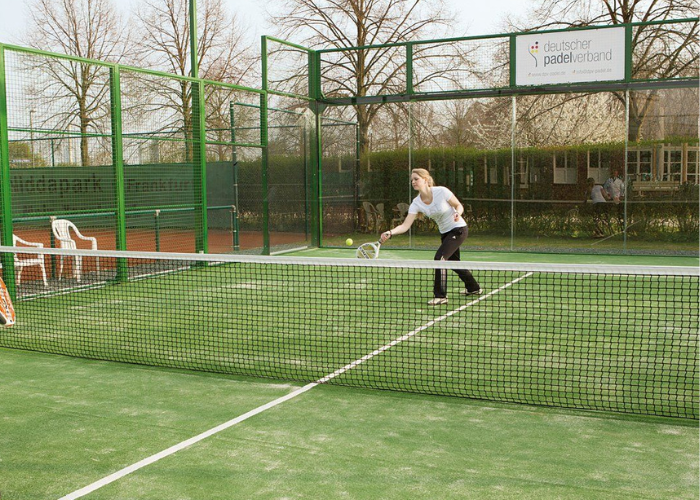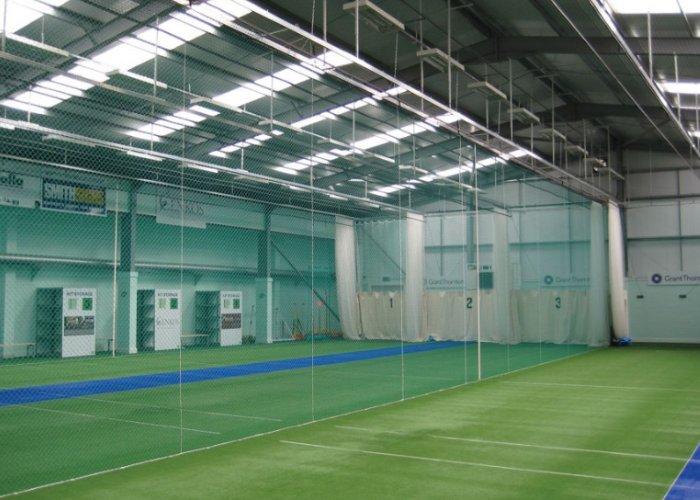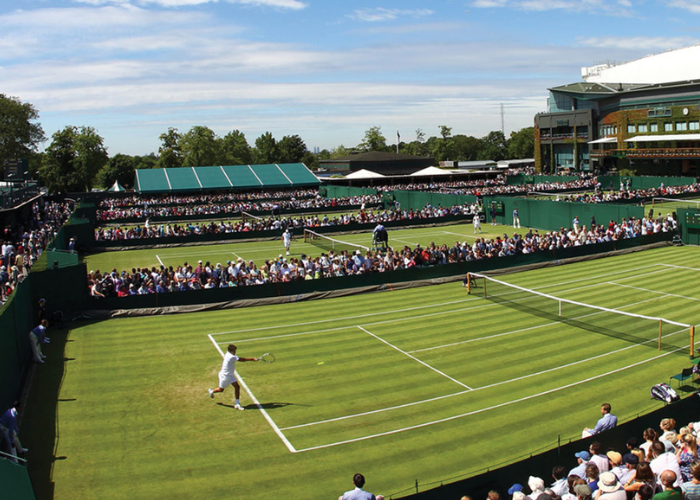We use cookies to make your experience better. To comply with the new e-Privacy directive, we need to ask for your consent to set the cookies. Learn more.
Tennis Court Dimensions & Size Guide
- Admin
- Blog Posts
- 27 Apr 2022
-
761views
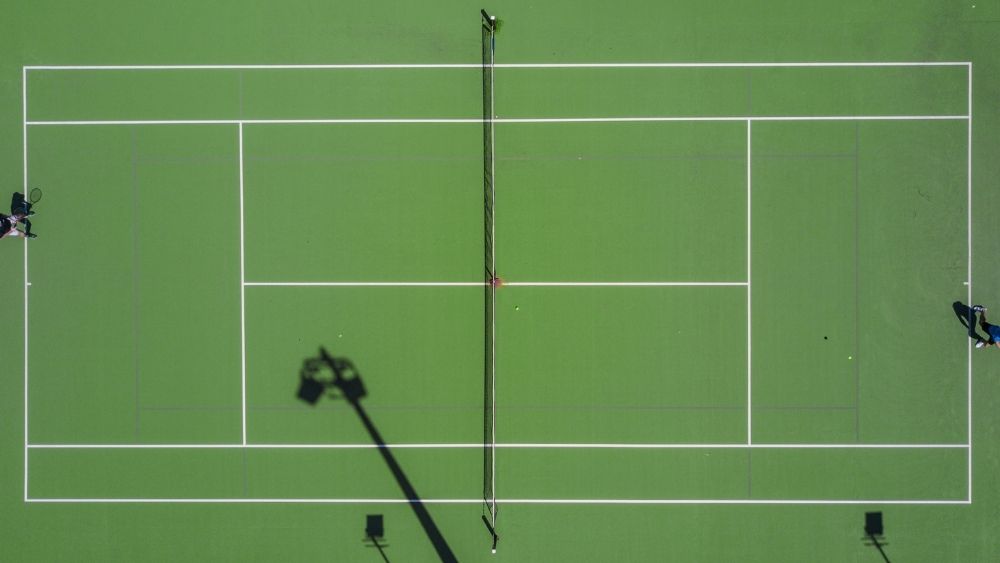
Whether you're asking the question because you're a tennis fanatic or you're considering installing a tennis court, we've laid out all the facts and figures about tennis court dimensions and size.
The dimensions of a standard tennis court size are 78ft (23.77m) long and 27ft (8.23m) wide, as determined by the International Tennis Federation.
Recreational tennis courts, such as those on private land, can be any dimension they like, since they don't fall under the jurisdiction of the ITF.
A standard tennis court, including clay courts, doubles courts, grass courts and indoor courts, is divided into two equal halves by a tennis court net.
There is also an alley, which is 6 feet (1.83 metres) wide, running along each side of the court, whilst the service line is 21 feet (6.40 metres) from the back fence.
Continue reading for all the facts, figures and details about tennis court size, dimensions and surfaces you need to know.
Single Tennis Court Dimensions
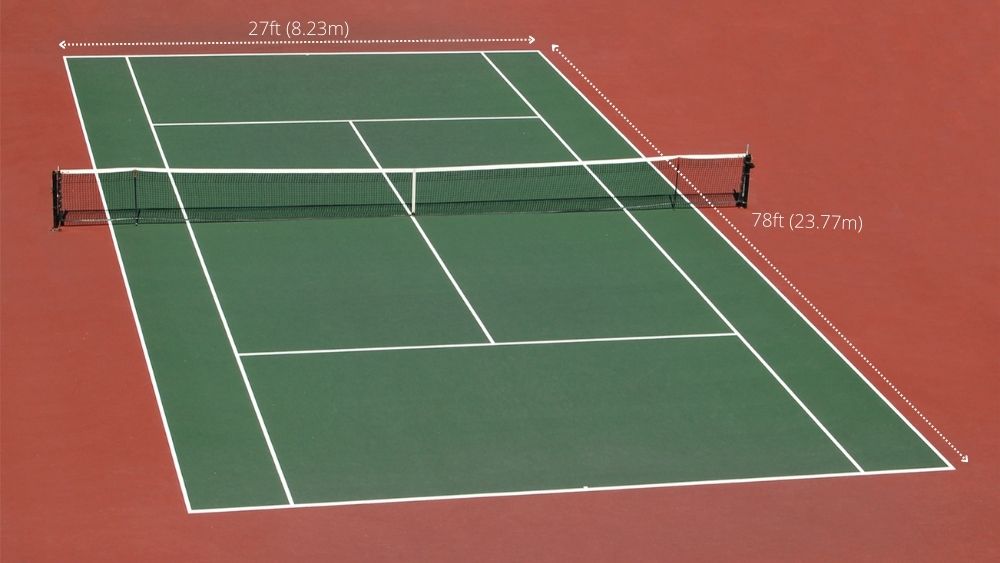
by ©cscredon(Getty Images Signature) via Canva.com
You’ll probably be aware that a singles tennis court obviously requires slightly less space than for doubles.
A regulation singles tennis court must be 8.23m (27ft) wide, as mentioned above, but it’s worth noting that you need some space around the court to account for players running off the court to catch balls going wide.
Your singles tennis court will require around 3.7m(12ft) of side-run to account for player overrun and for other players to pass by safely. It’s also worth noting that each tennis court area requires proper measurements, including the service boxes and no man’s land (the largest box near the baseline).
- Singles-only tennis courts are uncommon as most courts have doubles alleys
Double Tennis Court Dimensions
Tennis courts, as mentioned above, are more often than not built as double courts. This is because a double court allows for both single and doubles games, whereas a strictly single court has no flexibility.
That being said, a doubles court will require more space to be built to the correct dimensions.
When playing doubles matches, you and your partner will need slightly more room than in singles tennis, and that means the doubles alleys on either side of the court come into play. These alleys allow for a wider playing field and are 4.5ft in width.
- Modern tennis was inspired by lawn tennis which used an hourglass-shaped court
Length Of A Tennis Court
All tennis courts share the same length if it’s a standard-sized court.
This length would be 78ft or 23.77m if it was to be an internationally recognised size. It’s important to have a court of this length to provide players with enough space to run towards and away from the tennis net while allowing the ball enough space to bounce.
Width Of A Tennis Court
Similarly, the width of a tennis court is also very important. As mentioned above, there are often variations in the width of a court depending on if it’s a single or doubles court, but as most are doubles, players will simply choose whether to recognise the doubles alley or not.
The width then of a tennis court, including doubles alleys, is 36ft or 10.97m.
Total Tennis Court Area Size
The overall surface area of a standard tennis court is 2,808ft². However, it’s worth remembering that while this is the size of the playing area of a tennis court, you still need some space on every side of the court.
This is known as a run-off area, and while there is no official size for this area, you’ll want to make sure that there is enough space to allow players to run off of the court to return a wide ball, for example. You’ll also need enough space for things like umpire chairs, cool-down benches, people walking by and any other furniture that you may want to include.
Tennis Net Sizes & Dimensions
Something that people may forget about when building a tennis court is the size of the net. The height and size of the net are very important.
From the centre, the tennis net height needs to sit at 3ft, whereas at the sides by the tennis posts, it will be slightly higher at 3.5ft.
The net then also has to span the entire court and will be ever so slightly wider.
Why is it Important for the Tennis Net Height to be Correct?
It might seem obvious to say, but making sure that the tennis net height is correct is really crucial for the gameplay to be fair.
If the tennis net is too high, then it means the player's shots are more likely to hit the net, leading to wasted energy and the wrong player gaining an advantage.
On the other hand, if it’s too low, then it becomes too easy for the players to get shots over the net, and this means that rallies will be less competitive.
What Do The Lines Mean On A Tennis Court?
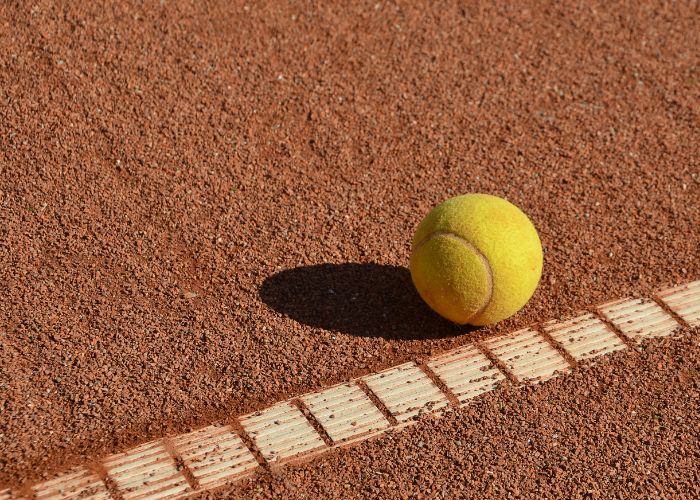
by ©martin951(Getty Images) via Canva.com
In simple terms, the lines on a tennis court simply dictate the area of play. If the ball bounces outside of this area into the run-off area, then it’s out of play. If it bounces inside the play area and subsequently outside, that will count as a point for the player who hit the ball over the net.
As well as this, there are a number of different tennis court lines separating areas of the court.
Tennis Serving Box
The four boxes on either side of the net are the service boxes, and when serving, a player must hit the ball so that it lands on the service box diagonally from them. Otherwise, it would be a fault.
Tennis Court Baseline
The baseline is the furthest line away from the net, and it runs parallel to each side of the court. The only exception here is when a player is serving, during which the baseline moves forward to accommodate a larger court.
Singles Sideline
The singles sideline is the line that runs along the service box and no man's land area, stretching from one end of the court to the other.
No Man's Land
No man's land is the area at the back of the court, and it runs from the baseline to the service line. If a player hits a shot that bounces in no man’s land, then it counts as a point for the player who hit the ball.
Doubles Alley and Sidelines
The doubles alley and sidelines run along either side of the court. The doubles sidelines is the outer-most line of the tennis court, and the doubles alley is the area that sits between the doubles sidelines and the singles sideline.
Tennis Court Surfaces
While the dimensions of a tennis court are generally of the same size to meet the standard, there are some notable variations. For example, the size of the run-off, the type of borders or surrounding system around the court, and the court's surface.
Here are some of the most common types of tennis court surfaces:
Grass Tennis Court
This is the classic surface for tennis, and this also stems from where tennis originated. Originally lawn tennis, the game was played on grass courts, and today, many tournaments still use this surface, such as Wimbledon.
This surface is great for speed and is perfect for players that are able to make quick decisions and act fast, as the grass can cause the ball to be more unpredictable during the bounce.
Clay Tennis Court
These are generally made of a compact brick and stone aggregate instead of actual clay. But this mineral composition has become a popular choice in tennis. A clay court will provide the ball with more bounce and reduce the number of fast finisher shots.
This ultimately means that longer rallies can be played, focusing more on the stamina and concentration of players rather than sheer speed and power.
Hard Tennis Court
These are usually made from synthetic materials and can lead to a variety of different play surfaces depending on their composition. The materials used can include acrylic, resin, rubber, concrete and asphalt in different layers. The latter two are used as a foundation, while the others form different layers above.
These hard tennis courts are somewhat of a middle ground between grass and clay, offering more bounce than grass but more speed than clay.
Conclusion: Understanding Tennis Court Size and Dimensions
There is a lot to consider when constructing a tennis court, but it’s important to remember that the dimensions of your court are important to get right so that it’s compliant with established tennis standards.
Of course, you can always hire a professional tennis court builder who will take into account things like tennis court size and net height, as well as professional advice on the type of surface you want.
FAQs
What are the tennis court dimensions in metres?
The length of a tennis court is 23.77 metres, single court width is 8.23m and a doubles court width is 10.97 metres, The playing surface area is 195.7m² for a singles court and 260.9m² for a doubles court.
What are the tennis court dimensions in feet?
The length of a tennis court is 78 feet, the single court width is 27 feet and the doubles court width is 36 feet, The playing surface area is 2,106ft² for a singles court and 2,808ft² for a doubles court.
What are the tennis court dimensions in yards?
The length of a tennis court is 26 yards, the single court width is 9 yards, and the doubles court width is 12 yards, The playing surface area is 702yd² for a singles court and 936yd² for a doubles court..
How much space does a tennis court need?
Overall, a standard court needs 7200ft², whereas tournament/professional courts need 9100ft².
by ©Mudassir Ali (Pexels) via Canva.com






